If you want to know the future of the creative industries, the universities are an excellent place to look. Here, you’ll find a fresh, young talent unfettered by the preconceptions of previous generations, striking out with new and innovative ideas.
Take Constanze Bachmann, who recently completed an MA in Fashion Design Technology (Womenswear) at London College of Fashion, University of Arts London (UAL).
Constanze is pushing strongly against traditional notions of how we define ‘fashion’. And as such, she’s become the first UAL student ever to showcase a non-physical garment as part of her final project.
“At the core of this project is the idea to create an experiential female identity that is socially sustainable, intersectional, evolving and accessible,” she explains. “Because of this, I became interested in the experience of digital fashion.”
Note that by ‘digital fashion’, she’s not talking about avatar costumes on Fortnite or filters on Snapchat; her vision goes far beyond such frippery. Not only is Constanze’s interpretation of ‘fashion’ non-physical, but it’s also non-visual, too.
In fact, sound is her medium for creating what she calls a “non-physical wearable”. In her own words: “The final NO-WEAR collection can be experienced through performance, sonic installation, vinyl, NFT-illustrations, and download.” You can view her final work in the video below.
As Constance explains: “I present my collection as performance experience, where I have control over the haptic feel consumed by an audience, allowing the design to continuously develop and respond naturally to consumers’ reactions, becoming an ever-changing intimate but shared experience.
“[It is] an experience intended to give the consumer transparency and insight into the production methods. I am presenting myself in garments that I wear when I design and in colours that are not represented on the sonochromatic colour-music scale and, in that sense, have no sound.”
We chatted to Constanze to further explore the thinking behind her genre-defying project. Read on to learn what inspired it and the process of creating it.
What inspired the project?
I create immersive fashion experiences that inhabit the liminal space between art, design and science. At the core of this project is the idea of creating an experiential female identity that is socially sustainable, intersectional, evolving and accessible.
Because of this, I got interested in the experience of digital fashion.
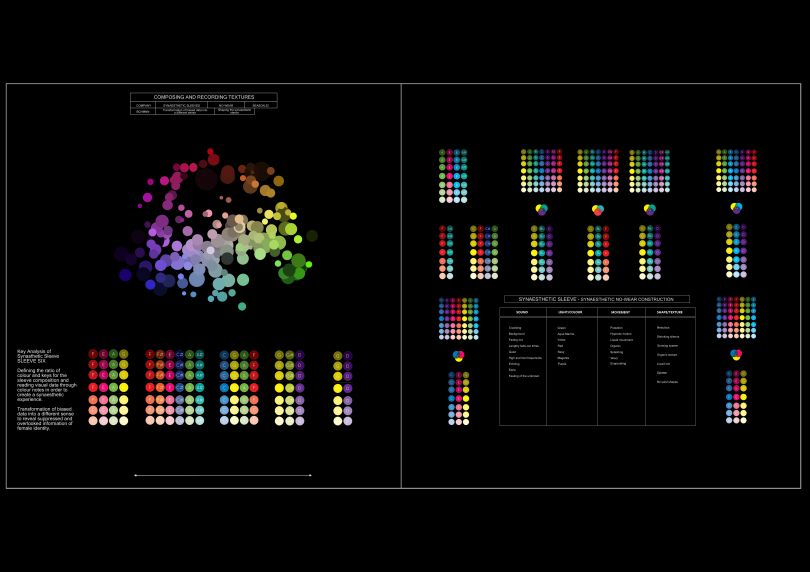
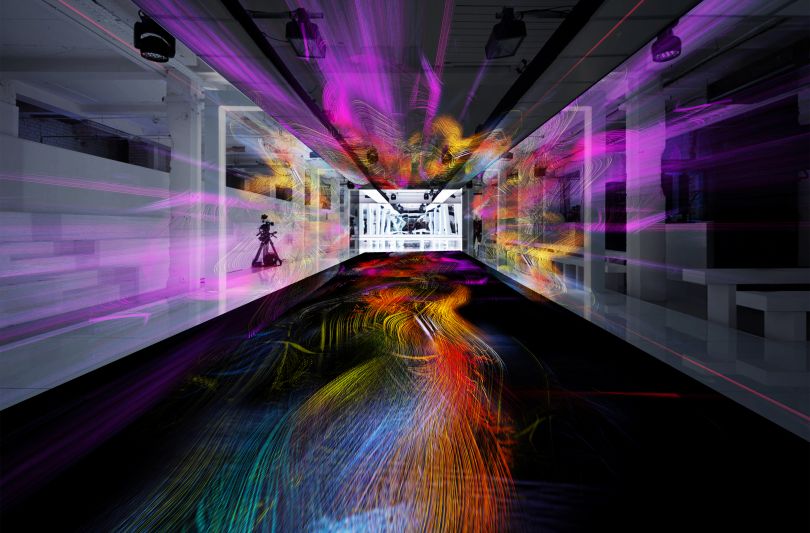
But fashion is a multisensory experience, but the haptic experience in digital-only clothing is less apparent. It is mainly about pleasing our visual aesthetics without considering many other senses that are a part of an actual wearable experience of dress. I am particularly exploring this digital tangible feeling that can fluidly be transferred between our virtual identity and a real-world experience.
I create experiential identity by approaching fashion interdisciplinary and from a feminist stance. In my work, my outcomes developed into an aesthetic of Ambient Electronica No-Wear, a fashion that is felt through sound and can be experienced through a range of media like vinyl, NFT, digital download and performance.
Vision has always been defined as the noble and dominant sense through which we consume, create, and comprehend the world. Fashion is heavily relying on this very biased sensory perception. I got interested in alternative visualisation strategies to reveal information and materialise female emotions that have been neglected under the sensory dominance of vision.
Knowing that our vision is biased by a conditioned way of looking at the world, I investigate how we consume and read female-focused visual data, looking closely at the information out of sight by analysing connections between vision, sound and haptic.
Therefore, at the centre of my work is the self-reflection of my own voyeuristic ‘Gaze’, which became a design language about unbiasing the visual we predominantly use to create design concepts and fashioned identity experiences.
I had created a body of design work which visually represented romanticised stereotypes of female identity. And I decided that I had to relearn how to see through other senses to be able to articulate an aesthetic that would visualise a more socially sustainable representation and physical experience of female emotions in fashion, really working actively to overcome Western gender norms.
What materials did you use?
My practice explores fashion and meaning through speculative materiality and the potential of multisensory design to work towards a more sustainable future. I extract information from my environment but use my resources in a non-invasive way.
I am working with a synaesthetic and speculative design process that focuses on transforming visual information into sonic materials, patterns and shapes that stimulate various sensations as emotions and a haptic experience as traditional clothing would do.
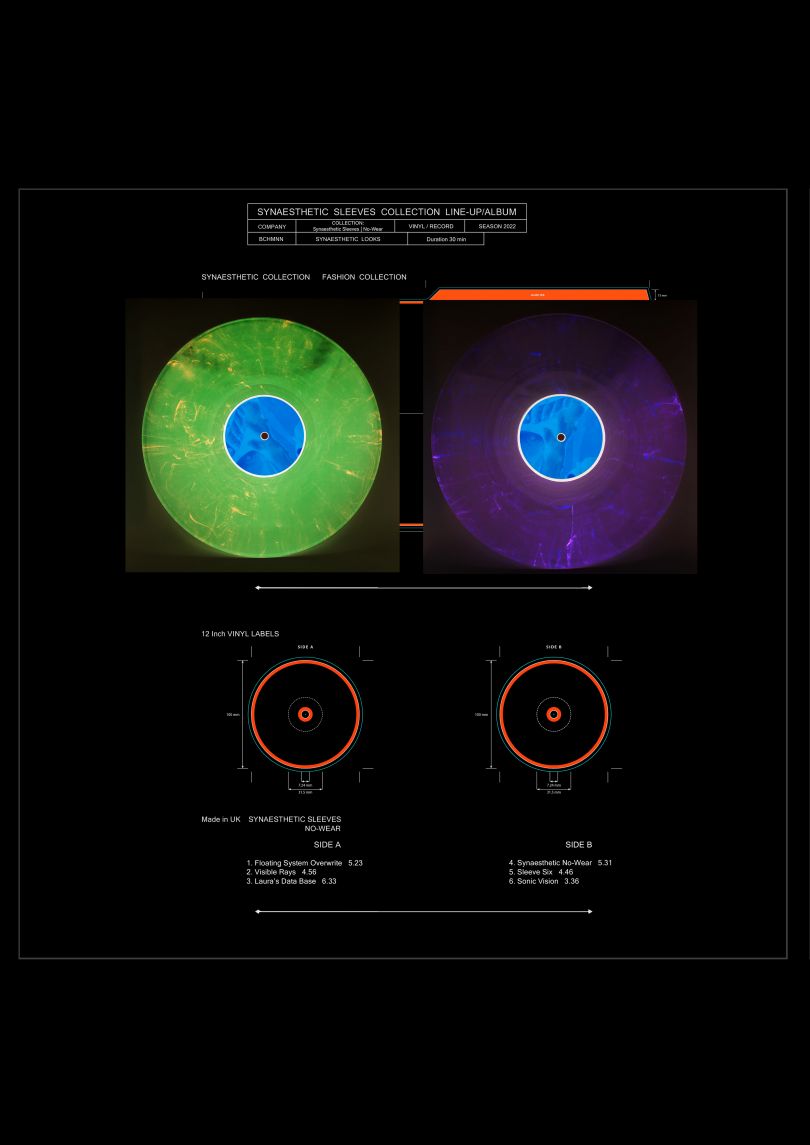
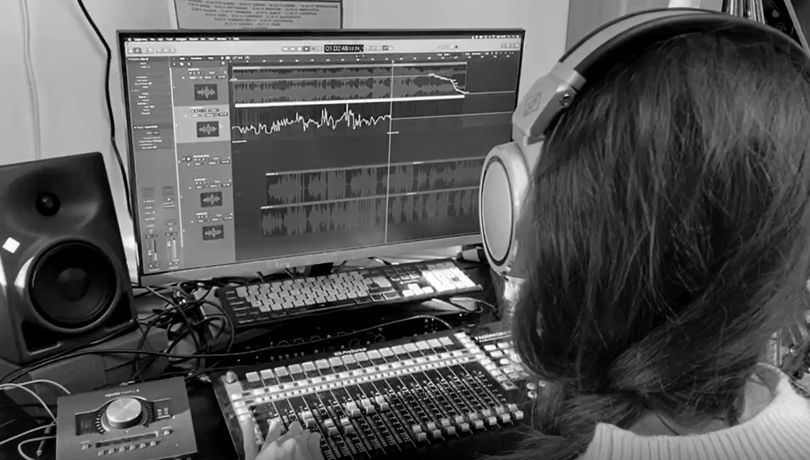
By using sound as my medium, I dress consumers through subsonic vibration and cross-sensory association, constructing fashion-based identity experiences that objectively look at female identity with unbiased eyes. By transferring design information between vision sound and haptic, I shape non-physical silhouettes that generate overlooked female data onto our bodies. I call them Synaesthetic Sleeves: non-physical but experiential fashion that becomes a wearable alternative for intersectional identities, freed from romanticised depictions of female emotions.
To create my silhouettes, I analysed colour ratios, colour dynamics, movement, saturation, textures, shapes and arrangements in imagery from my initial research, artwork and designs. I then translated them through scientific cross-sensory analysis, cross-sensory association patterns and collaborative, intuitive interpretation into new mediums as noise, sound, sonic vibration, rhythm, frequency, pitch, and amplitude from which I composed tangible and visceral patterns and textures for my sonic silhouettes.
Why does the comparison and exchange of information between vision and sound make sense? Specifically, the wave character as the basis of energy transmission to the sensory organs enables the systematic comparison of light waves and sound waves, allowing to revaluate information and link vision, sound and haptic to shape new digital and physical fashion experiences.
Did you collaborate with anyone on the project?
Yes, I collaborated with people from my community that would engage in exchanging feminist knowledge and would be able to contribute by interpreting visual data into sound data. I did that to ensure that a range of feminist voices would be integrated into shaping the final experiential body of work.
To name a few: my sister Jessica, who is also a designer and with whom I formed our art collective BCHMNN; Nanae Saga, a musician and teacher; my sister Miriam, who is a sociologist; and Michael Rendall, who is a musician and producer.
What’s the overall purpose of the project?
I intend to create a design that breaks fashion from the comfort of known physical concepts and evolves our perception of a physical experience – design that shapes the legitimacy of experiential and digital fashion in terms of physicalness and wearability. I want to encourage consumers toward a new way of looking at the fashioned female body to create an intersectional identity experience.

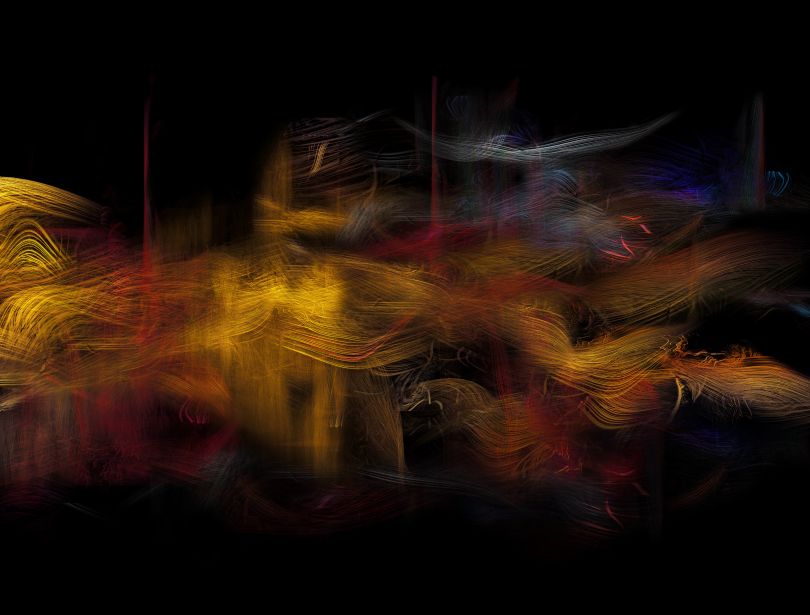
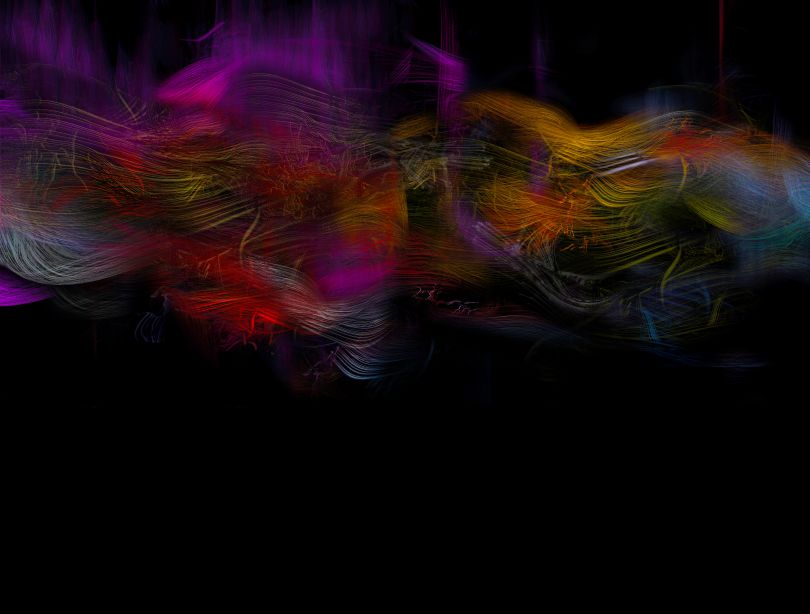
We live in the era of the metaverse and shifting realities, where our interaction and access to fashion are constantly changing. As a designer, I want to create immersive wearable experiences capable of a fluid transition between those realities. Ones that capture the aesthetic of fashion through intimate experiences that can be felt on and below our skin’s surface, expose themselves through bodily reactions, and create diverse visceral sensations.
I am, in a way, carving out my niche, where I want to help companies create digital clothing that creates truly haptic experiences in the real world. But I see my work in the realm between design, art, music and activism. I would like to exhibit, share, and expand it beyond commercial consumerism and create new ways to experience fashion which, as I said before, encourages the consumer towards a new way of ‘looking at the fashioned female body’.
Grow your creative ideas at UAL
The world needs creative people. If you want to spend your life pursuing your passion in a creative job that you love, University of Arts London can help you get there.
UAL offers postgraduate courses in fashion subjects, including fashion design, fashion making and pattern cutting, fashion business and fashion communications, as well as other creative subjects such as accessories, footwear and jewellery; 3D design and product design; textiles and materials; performance and design for theatre and screen; fine art; illustration and more.
View the full list of courses to find the perfect study option.
Source: Constanze Bachmann’s groundbreaking UAL project redefines what fashion means | Creative Boom













